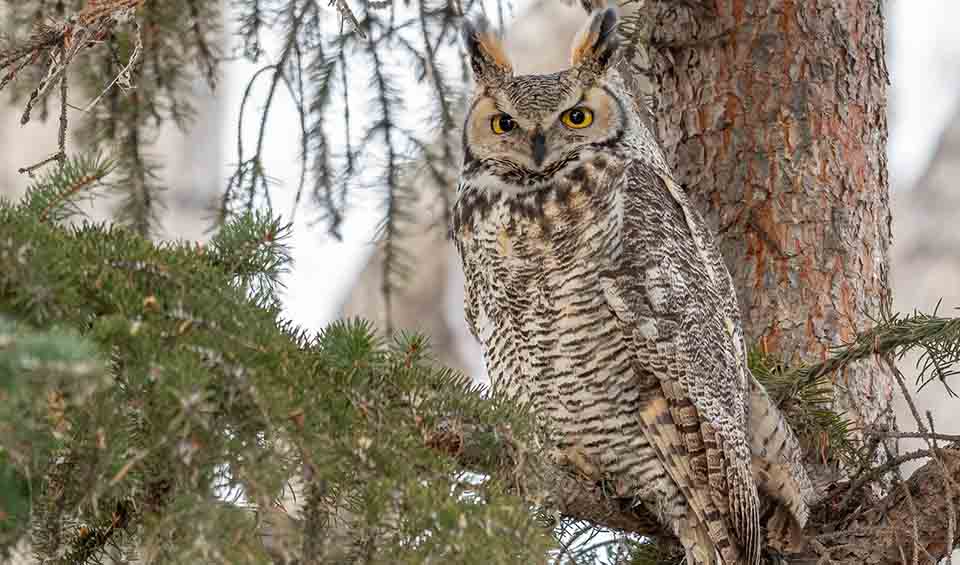Bubo – Horned owls
These fierce apex predators are the largest of the owls, with wingspans of up to 2 m (6.6 ft)
Horned owls are among the most recognizable and widely distributed owls across the globe. Known for their impressive size and the distinctive feathered tufts on their heads, which are often mistaken for ears, these “horns” are actually one of their most striking visual features.
Despite their name, these tufts play no role in hearing. Owls have asymmetrically placed ears that are hidden under their feathers, a feature that provides them with exceptional directional hearing. The ear tufts serve several other functions, though. They can help the owl appear larger and more intimidating to both predators and competitors. Additionally, when the owl is perched among branches, the tufts can help break up its outline, enhancing its camouflage alongside the mottled patterns of its plumage.
The species within the Bubo genus, like the Great Horned Owl (Bubo virginianus) in the Americas or the Eurasian Eagle-Owl (Bubo bubo) in Europe and Asia, are apex predators. Their powerful talons and strong beaks enable them to hunt and subdue sizeable prey, including mammals like hedgehogs and even primates in some regions. Their diet, however, is diverse and may also include smaller birds, reptiles, amphibians, and invertebrates.
Horned owls have adapted to a wide range of habitats, from the tundra of the Arctic Circle to temperate forests, mountainous regions, and even deserts and tropical rainforests. Their adaptability is a testament to their evolutionary success.
These owls are usually solitary or live in pairs and are highly territorial. The ear tufts, along with distinctive plumage patterns and vocalizations, play a crucial role in species and individual recognition, particularly during the breeding season. Their calls, which can carry for miles, are used for declaring territory, attracting mates, and communicating with their offspring.
Species in this genus
Snowy owl
There is more to this species than its majestic coat of thick white feathers and piercing yellow eyes
Eurasian eagle-owl
These owls have specialized feathers that make their flight nearly silent
Great horned owl
Often called the “tiger of the sky” because of its fierce hunting skills and bold personality
Indian eagle owl
One of the largest owls in South Asia





